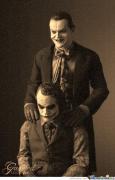(SIDE CONVERSATION MOVED FROM AMMO SUBFORUM THREAD - MOD)
@feudist
What you're describing is not that uncommon.
I highly doubt your ammo was your variable or even the gun for that matter.
You are describing a "vetting process" with ammo during normal conditions.
Your malfunctions appeared during "Oh SNAP!" moments (being charged by dogs). Watch a bunch of OIS body cam videos and you will frequently see malfunctions that I'm sure the involved officers seldom or never experienced in training. I can tell you from prior experience that your brain/body do weird things under stress and that combined psychological/physiological response commonly causes issues between your biological hand and your mechanical gun.
There is NO WAY to replicate real life lethal force scenarios in training....NONE! Why? Because your body only produces and discharges chemicals during those type of situations. I think the closest thing you can do is some type of SIMS that actually induces pain, but even that isn't quite the same. The only way to get inoculated to stress (combat) is equal stress (combat). Since that is very rare in civilized society chances are you will never reach that point. Even then there are other variables.
The only thing you can do is try to train as best you can. This is why malfunction clearance drills are important and should become mechanical second nature. As for your Gen2 Glock, I wouldn't trust the opinion of a "gunsmith." Back to Glock it would have gone.
For me the ammo choice is easy. I carry Federal HST. My department issues it. It works in everything. We know because we have tested it in damn near everything. I have always individually visually inspected each round of my carry ammo before it goes in the magazine and regularly check rounds that have been chambered for bullet setback, but in a 9mm it is pretty rare. I would have no qualms carrying Remington Golden Saber (I have in the past), Speer Gold-Dot, or any of the other reputable rounds.
Carrying and training with a back-up gun (and the transition to it) is sound practice.




 Reply With Quote
Reply With Quote




